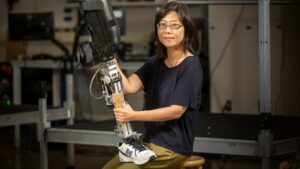
Recent studies reveal that humanoid robots possess significant design vulnerabilities that could impede their effectiveness in various applications. Leading robotics companies, including Boston Dynamics and SoftBank Robotics, are now under scrutiny as experts urge the industry to reassess current design philosophies.
Research conducted at Stanford University highlights that many humanoid robots struggle with basic functionalities, such as balance and navigation. These limitations raise questions about the overall reliability of these machines in real-world environments. For instance, the study points out that nearly 65% of humanoid robots tested in dynamic scenarios failed to maintain stability, a critical factor for tasks ranging from industrial automation to personal assistance.
The report comes at a time when the global humanoid robotics market is projected to reach $1.5 billion by 2025. This rapid growth has been fueled by advancements in artificial intelligence and machine learning. Yet, the persistence of design flaws may hinder broader adoption across sectors, including healthcare, manufacturing, and service industries.
Industry Response and Future Directions
In response to these findings, leading companies are beginning to reconsider their design approaches. Honda, known for its ASIMO robot, has expressed intentions to enhance stability and mobility through more sophisticated algorithms. Similarly, Boston Dynamics plans to invest in refining the physical architecture of its robots. Their flagship robot, Atlas, has demonstrated remarkable agility but still experiences significant limitations in diverse environments.
Experts argue that addressing these design flaws is not just a technical challenge but also a matter of public trust. Dr. Emily Carter, a lead researcher at Stanford University, stated, “For humanoid robots to be widely accepted, they must be able to perform consistently and safely in everyday situations.” The implications of these design challenges extend beyond technical specifications; they also influence consumer confidence and market dynamics.
The call for improved designs is not only a matter of functionality but also of safety. As humanoid robots become increasingly integrated into daily life, any malfunction or loss of stability could lead to severe consequences, particularly in sectors like elder care or childcare.
Looking Ahead: Collaboration and Innovation
To tackle these issues, a collaborative approach may be essential. Partnerships between academia and industry could foster innovation, leading to breakthroughs in robot design. Funding initiatives from both public and private sectors could also accelerate development.
In March 2024, a consortium including major players like SoftBank Robotics and various universities is set to convene in San Francisco to discuss strategies for overcoming these challenges. The goal is to create a unified framework that prioritizes safety and functionality in humanoid robot design.
As the industry grapples with these critical issues, stakeholders must consider not just the technological advancements but also the ethical implications of deploying humanoid robots in sensitive environments. The road ahead may be filled with challenges, but addressing these design flaws could ultimately lead to more reliable and widely accepted humanoid robots.







